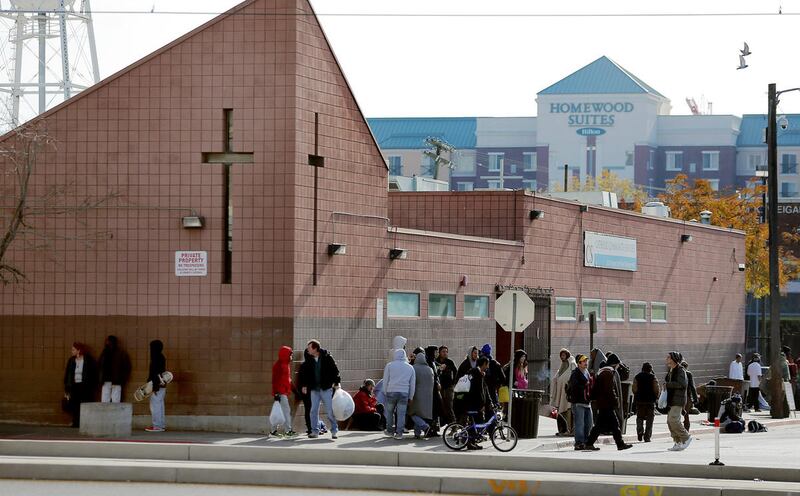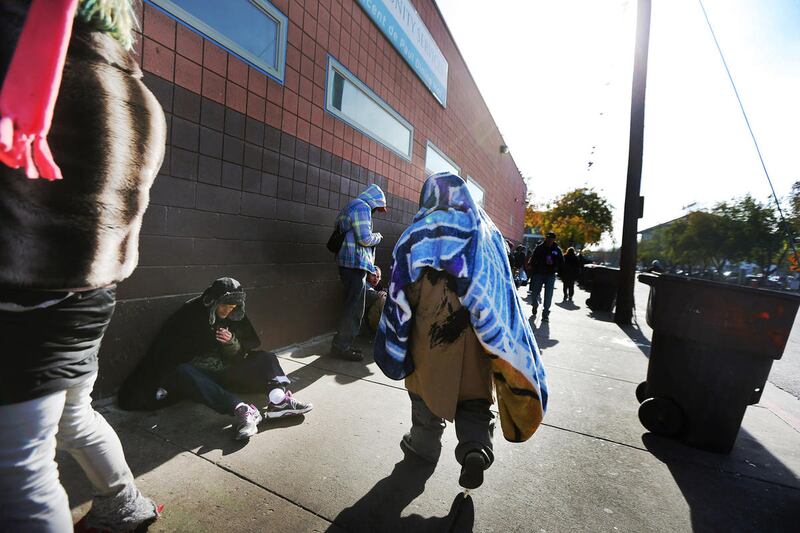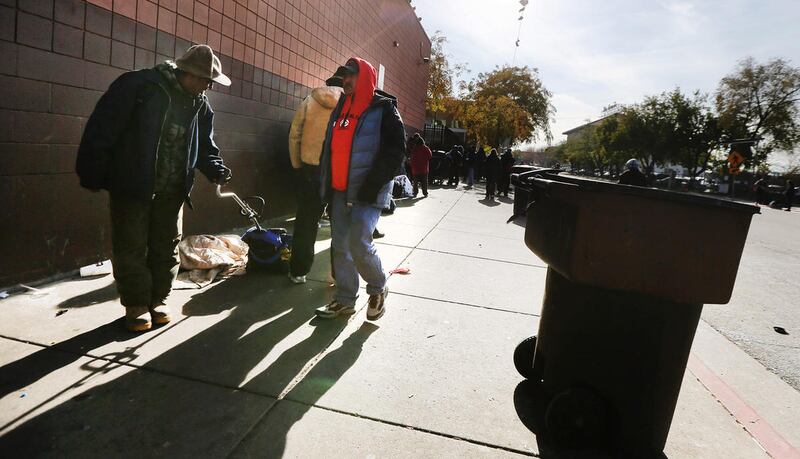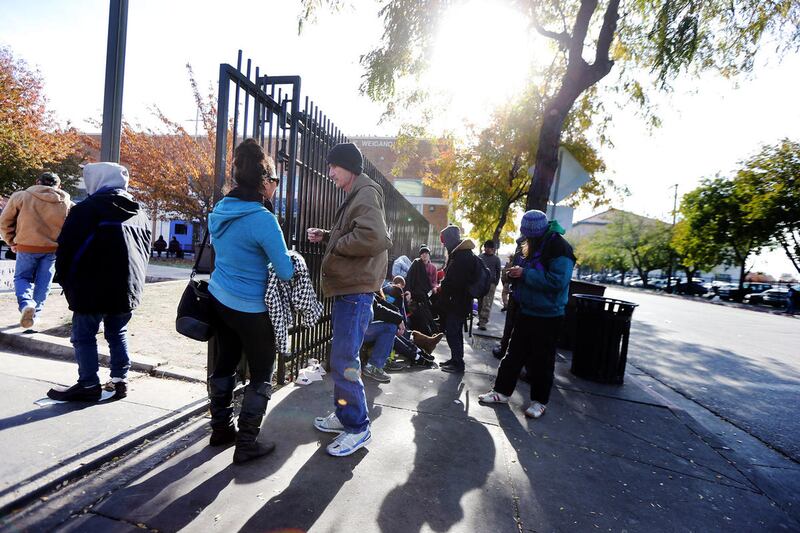SALT LAKE CITY — Salt Lake County and Salt Lake City will ask the Utah Legislature for a total of $27 million to construct homeless shelters at scattered sites and provide services to divert people from emergency shelters and prevent homelessness.
The state appropriation would be matched with $10 million in private funding, Salt Lake County Mayor Ben McAdams said.
Most of the money would be used to construct new emergency shelters, one for families and shelters for single men and single women. It has not yet been determined if one or two shelters would be required for single men and women.
No locations have been selected for the effort, but it reflects a new approach to caring for the homeless, looking at individuals within nine different homeless categories, rather than a one-size-fits-all approach to offering assistance to those in need.
"That's a significant amount of money, but we believe because we're deciding how to spend it based on outcomes that we want to achieve, that we will get results," the mayor said, referring to the county's collective impact approach.
McAdams said the plan recognizes that a single, large model isn’t the best approach to help the various populations of homeless people return to a stable environment.
Salt Lake City Mayor Ralph Becker noted that cities across the country are grappling with the issue of homelessness, two of which have declared states of emergency — Los Angeles and Honolulu.
The work of the panels appointed by Becker and McAdams puts Salt Lake City "well ahead" of other cities ensuring homeless people receive services they need and the services are effective.
"We have so much more to do in this community and across the region and the state. The work of Mayor McAdams around the collective impact process has been a model for us around homelessness," Becker said.
"The real solutions, I think, are now before us," Becker said.
The recommendations announced Monday represent the work of 11 months of study by two groups empaneled by McAdams and Becker. The city's Homeless Services Site Evaluation Commission reviewed sites of existing homeless services providers, traveled to other cities to tour their facilities and their placement looking at how facilitaties are integrated into communities.
The county's Collective Impact on Homelessness Steering Committee, meanwhile, studied homeless services, how they're delivered, and considered future service needs. The two groups' recommendations have been melded, with overwhelming support for a scattered sites approach to future facilities for homeless shelters and services.
Under the scattered facilities option, supportive facilities would be co-located with smaller shelters for subpopulations such as families or homeless individuals. The structures would be geographically separate from one another to minimize neighborhood impacts. However, costs would be higher because some services would be duplicated for each subpopulation.
While that scenario has public support, some people attending Monday's meeting said locating the facilities will present significant challenges.
"Scattered sites are great but prepare for NIMBY (not in my backyard) fights," said Glenn Bailey, executive director of Crossroads Urban Center, which serves and advocates for low-income people.
Harris Simmons, president of Shelter the Homeless, said the effort will require leadership to secure the needed state funding but also over zoning to locate the facilities.
"The hard work is really ahead of us," said Simmons, who is chairman and CEO of Zions Bancorp.
Although municipal leaders' pitch for state funds will be somewhat sweetened by the plans for a $10 million match, state lawmakers caution there are many competing demands for funding.
Last week, Sen. Lyle Hillyard, R-Logan, has said rising health insurance costs for state employees is just one big-ticket items that will compete for one-time money as lawmakers put together the state budget.
Homeless advocate Pamela Atkinson said she was pleased that the city and county processes had been so inclusive, including the voices of services providers, business interests and homeless people.
"We certainly need to make sure they're in neighborhoods that embrace them, that they're in neighborhoods where there is transportation to downtown," she said.
More work is needed to drill down on costs of scattered site facilities and services needed to support them, she said.
Email: marjorie@deseretnews.com










